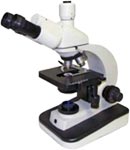Histopathology of Non-Scarring Alopecia
Hi Dr. Rassman, I was wondering if you knew the histopathology of non-scarring alopecia in a 21 year old male? My dermatoligist said I had diffuse hair loss and non-scarring alopecia and prescribed me Propecia; I am also taking Rogaine. Additionally, what do you think of spirinolacatane as a topical treatment as an anti-androgen for this type of hair loss?
Thanks
 The histopathology of non-scarring alopecia is just as it states — When you look under a microscope of your scalp biopsy there is often cells seen that reflect some autoimmune disorder, but no scarring where there is hair loss. Examples include anagen effluvium, androgenetic alopecia, chemical alopecia, folliculitis (mild), inherited disorders of the hair shaft, telogen effluvium, alopecia areata, and traumatic alopecia.
The histopathology of non-scarring alopecia is just as it states — When you look under a microscope of your scalp biopsy there is often cells seen that reflect some autoimmune disorder, but no scarring where there is hair loss. Examples include anagen effluvium, androgenetic alopecia, chemical alopecia, folliculitis (mild), inherited disorders of the hair shaft, telogen effluvium, alopecia areata, and traumatic alopecia.
Of the list above, the most common non-scarring alopecia is genetic balding (otherwise known as androgenic alopecia — AGA; otherwise known as male pattern baldness — MPB). And since your dermatologist prescribed Propecia for your non-scarring alopecia I would guess that your dermatologist thought you had MPB. It probably would’ve been much easier if you were just told that you have male pattern baldness. If you have diffuse unpatterned alopecia (DUPA) then the donor area behind your head would have substantial miniaturization. Speak with your doctor about how he/she arrived at the conclusions.
Finally, spironolactone has anti-androgenic properties, but clinically there is little good evidence that it helps with MPB.

Reader Comments0
Share this entry
Leave a Comment
Want to join the discussion? Feel free to contribute! Note: We do not tolerate offensive language or personal attacks to other readers. Marketing links or commercial advertisements will be deleted.